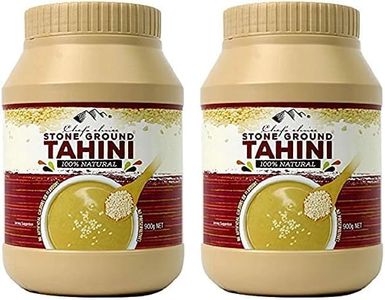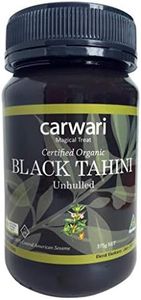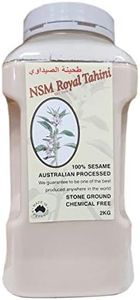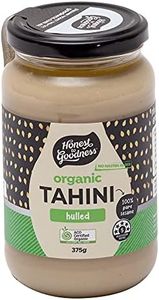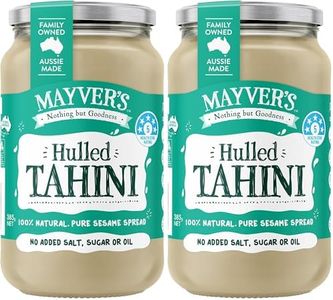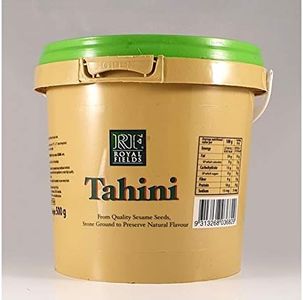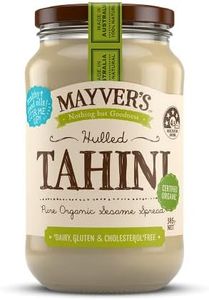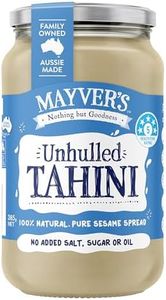We Use CookiesWe use cookies to enhance the security, performance,
functionality and for analytical and promotional activities. By continuing to browse this site you
are agreeing to our privacy policy
8 Best tahinis
From leading brands and best sellers available on the web.Buying Guide for the Best tahinis
Choosing the right tahini can make a big difference in both taste and texture for your dishes, whether you’re spreading it on toast, swirling it into hummus, or drizzling it over roasted vegetables. Tahini, which is a paste made from sesame seeds, varies in several important ways that influence its flavor, texture, and versatility. Knowing what to look for will help you select one that suits your cooking style and personal preferences.Sesame Seed Origin and TypeTahini is made from either hulled or unhulled sesame seeds, which come from various regions. Hulled seeds have the outer shell removed, producing a smoother and milder paste, while unhulled seeds result in a slightly bitter taste with a thicker, grittier texture and higher nutritional content. Seeds from different countries can contribute subtle differences in flavor. If you favor a lighter, creamier tahini with a subtler taste, go for those labeled as hulled; for a robust flavor and more nutrients, unhulled might be preferred. Think about what dishes you plan to use tahini for and whether you prioritize nutrition or mildness.
Roasting LevelSome tahinis use raw sesame seeds, while others use roasted seeds, which significantly impacts the flavor profile. Raw tahini is lighter in flavor with a gentle nuttiness, while roasted tahini is deeper and more pronounced in taste. If you enjoy bold, toasty flavors in your dishes, roasted is the way to go; if you prefer something more delicate or versatile, raw might suit you better. Consider your typical recipes and flavor preferences when making your choice.
Texture and ConsistencyTahini can be smooth and pourable or thick and pasty, depending on the manufacturing process and storage. Smooth, runny tahini is easier to use as a drizzle or in dressings, while thicker tahini may need to be stirred and is better for recipes where structure is needed. If you want your tahini for drizzling and sauces, a smoother consistency is ideal; if you’re making spreads or want more control over texture, a thicker product might work better.
Separation and StirringNatural tahini often separates, with the oil rising to the top. Some varieties use stabilizers to prevent this. Separation is normal and not a sign of poor quality, but it does mean you’ll need to stir it before use. If you prefer a product that’s always ready to use, look for tahini that highlights ‘no stir’ or ‘creamy’ on the label; otherwise, be prepared to give natural versions a good mix before each use, which can actually indicate minimal processing.
Additives and IngredientsPure tahini should contain just sesame seeds (and sometimes salt). Some brands may add oils, salt, or preservatives. For cooking and the purest flavor, look for tahini with sesame seeds as the only ingredient. If you like a slight salty kick, you might opt for versions with salt, but extra oils or additives aren’t necessary unless you have a taste preference. Check the ingredient list if you want the cleanest, most traditional tahini.
Flavor ProfileThe taste of tahini can range from mild and nutty to strong and slightly bitter, depending on the seeds used and the production method. If your recipes need a subtler presence, choose a mild tahini; if you want tahini to stand out or act as a primary flavor, a more robust, intense variety might be better. Reflect on how you want to use the tahini and whether you want it to blend in or be a star.
